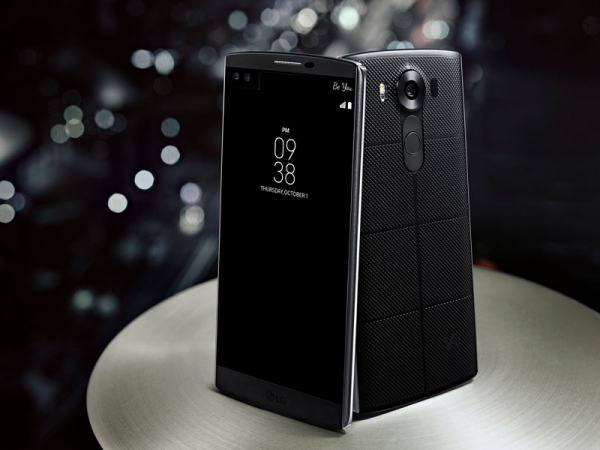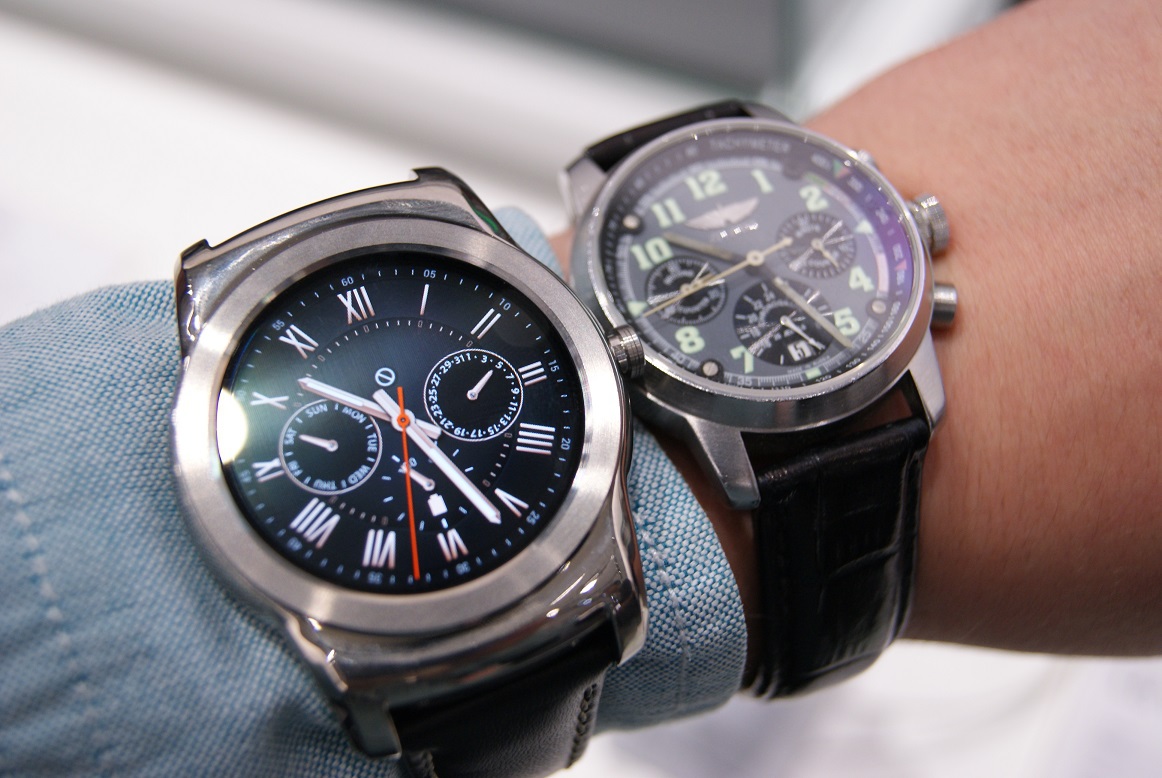LG: face cream, plastic windows, elevators and smart watches
The new LG V10 smartphone was moved by a tank - it was the only way that it was broken after it fell from 10 meters and remained intact. At IFA 2015 in Berlin, the company showed excellent smart watches. Now, among other things, LG is working on a universal bank card .
It all started with a face cream in 1947.

Chebol LG, whose name arose from the merger of Lucky and Goldstar ("happy" and "Venus"), began in 1947, when the cosmetics company Lak Hui Chemical Industries was founded. The first product was a face cream, later the range is expanded to a creamy Lucky toothpaste. As in the case of ham Spam, in Korea, all the toothpaste was called Lucky.
')
Chaebols are financial-industrial groups, conglomerates of independent companies. As in the case of Samsung, which from the sale of dried fish and sugar reached the production of smartphones and construction equipment, the “ancestors” of the chaebol LG Group began to work in new areas: in parallel with household chemicals and cosmetics, the company is launching the first plastics in Korea and in 1956, produces PVC pipe.
The Republic of Korea gained independence from Japan on August 15, 1945. Up to this point, it was not easy to engage in entrepreneurship, as the founder of Samsung, Li Ben Chol, who discovered the company back in 1938, experienced it . But the country, which was one of the poorest in the region in the 1960s, was trying hard to develop industry, improve education and the economy.
In 1958, the President of the Republic of South Korea helped found Goldstar, which was later renamed LG Electronics. She was a subsidiary of Lak Hui Chemical Industries.
Goldstar took up household appliances and electronics, began to produce transistor radio receivers and in a few years became the country's first company exporting these products. In South Korea, Goldstar was the first to produce black and white TVs, elevators, washing machines and electric hair dryers. In 1977, Goldstar will begin producing color TVs. In this compilation, you can see their ads of the 1980s, there were a number of interesting solutions - from the “surround sound”, which was achieved with the help of the pivoted built-in speakers of the TV, to a separate compartment for the remote control.
In 1969, Lak Hui Chemical Industries was renamed Lucky Chemical Ind., And the entire group company became known as the Lucky Group.
In 1982, Goldstar opens a plant in Huntsville, in the USA - in the state of Alabama. This is the first South Korean factory abroad.
The year 1986 was marked by the opening of the first VCR plant in Europe - in Germany. And it is opened by the South Korean company Goldstar. Back in 1974, she invested in semiconductor manufacturing, which gave her the opportunity to produce her own chips and create a complete production cycle of products.
In 1994, Goldstar bought a 57% stake in the American television station Zenith Electronics and thereby deprived the United States of the last manufacturer of television equipment. At the same time, Goldstar acquired a 3% stake in the American 3DO Corporation. At the same time, the company merged with the Japanese ALPS, and created a joint research laboratory Frontec, in which she began working on the creation of active LCD matrices and plasma panels.
By the 1980s, the Lucky Group produced microwaves, refrigerators, air conditioners, cassette recorders, fiber optics and plastic windows. The company invested in semiconductors, opened the first research center in the country, and for many years worked with plastics. In the 1980s, Lucky Engineering launched the first Korean computer, while Goldstar launched the digital video recorder and color video camera.
In 1995, the head of LG Group chaebol, Ku Jagyon, decided to unite all brands under the same name LG. After that, Goldstar turned into LG Electronics. Look at the smooth transformation in the first commercial in this compilation of 1997. In 1996, LG signed a contract with IBM for the joint production of multimedia technologies. In 1998, released the world's first 60-inch plasma panel.
Since 2001, LG Electronics begins to produce mobile phones of the GSM standard, in 2002, it starts producing phones with color displays. In less than a year, export volume is 2.5 million units. By 2007, the company patented 3G in GSMA mobile phones.
In 2009, LG was in third place in the world in the supply of mobile phones. In 2010, the company released the world's first smartphone with a dual-core processor - it was the LG Optimus 2X, and a year later - one of one of the first Android-smartphones with support for 4G LTE technology. At the same time, the first smartphone with 3D support appeared: LG Optimus 3D. The phone with the brightest 700 nit display came out in 2011, it was the LG Optimus Black.
In 2013 and 2014, LG was one of the five largest manufacturers of smartphones until it was replaced by the Chinese Xiaomi.
In 2009, LG built the phone into a LG GD-910 watch. It was far from the first such device , but one of the first that was nice to see on hand.

At the IFA 2015 in Berlin, LG showed the LG Watch Urbane smart watch - a great gadget with a massive case and a leather strap that looks more like a classic watch. From a distance of half a meter is very difficult to distinguish. Prior to that, in 2014, LG began selling smart watches with a 1.3-inch round LG G Watch R display .

We will live and find out what the South Korean company will do in the future, filled with connected devices.
It all started with a face cream in 1947.

From face cream to PVC pipe
Chebol LG, whose name arose from the merger of Lucky and Goldstar ("happy" and "Venus"), began in 1947, when the cosmetics company Lak Hui Chemical Industries was founded. The first product was a face cream, later the range is expanded to a creamy Lucky toothpaste. As in the case of ham Spam, in Korea, all the toothpaste was called Lucky.
')
Chaebols are financial-industrial groups, conglomerates of independent companies. As in the case of Samsung, which from the sale of dried fish and sugar reached the production of smartphones and construction equipment, the “ancestors” of the chaebol LG Group began to work in new areas: in parallel with household chemicals and cosmetics, the company is launching the first plastics in Korea and in 1956, produces PVC pipe.
The first in South Korea
The Republic of Korea gained independence from Japan on August 15, 1945. Up to this point, it was not easy to engage in entrepreneurship, as the founder of Samsung, Li Ben Chol, who discovered the company back in 1938, experienced it . But the country, which was one of the poorest in the region in the 1960s, was trying hard to develop industry, improve education and the economy.
In 1958, the President of the Republic of South Korea helped found Goldstar, which was later renamed LG Electronics. She was a subsidiary of Lak Hui Chemical Industries.
Goldstar took up household appliances and electronics, began to produce transistor radio receivers and in a few years became the country's first company exporting these products. In South Korea, Goldstar was the first to produce black and white TVs, elevators, washing machines and electric hair dryers. In 1977, Goldstar will begin producing color TVs. In this compilation, you can see their ads of the 1980s, there were a number of interesting solutions - from the “surround sound”, which was achieved with the help of the pivoted built-in speakers of the TV, to a separate compartment for the remote control.
In 1969, Lak Hui Chemical Industries was renamed Lucky Chemical Ind., And the entire group company became known as the Lucky Group.
Entering the global market
In 1982, Goldstar opens a plant in Huntsville, in the USA - in the state of Alabama. This is the first South Korean factory abroad.
The year 1986 was marked by the opening of the first VCR plant in Europe - in Germany. And it is opened by the South Korean company Goldstar. Back in 1974, she invested in semiconductor manufacturing, which gave her the opportunity to produce her own chips and create a complete production cycle of products.
In 1994, Goldstar bought a 57% stake in the American television station Zenith Electronics and thereby deprived the United States of the last manufacturer of television equipment. At the same time, Goldstar acquired a 3% stake in the American 3DO Corporation. At the same time, the company merged with the Japanese ALPS, and created a joint research laboratory Frontec, in which she began working on the creation of active LCD matrices and plasma panels.
By the 1980s, the Lucky Group produced microwaves, refrigerators, air conditioners, cassette recorders, fiber optics and plastic windows. The company invested in semiconductors, opened the first research center in the country, and for many years worked with plastics. In the 1980s, Lucky Engineering launched the first Korean computer, while Goldstar launched the digital video recorder and color video camera.
LG
In 1995, the head of LG Group chaebol, Ku Jagyon, decided to unite all brands under the same name LG. After that, Goldstar turned into LG Electronics. Look at the smooth transformation in the first commercial in this compilation of 1997. In 1996, LG signed a contract with IBM for the joint production of multimedia technologies. In 1998, released the world's first 60-inch plasma panel.
Smartphones and smart watches
Since 2001, LG Electronics begins to produce mobile phones of the GSM standard, in 2002, it starts producing phones with color displays. In less than a year, export volume is 2.5 million units. By 2007, the company patented 3G in GSMA mobile phones.
In 2009, LG was in third place in the world in the supply of mobile phones. In 2010, the company released the world's first smartphone with a dual-core processor - it was the LG Optimus 2X, and a year later - one of one of the first Android-smartphones with support for 4G LTE technology. At the same time, the first smartphone with 3D support appeared: LG Optimus 3D. The phone with the brightest 700 nit display came out in 2011, it was the LG Optimus Black.
In 2013 and 2014, LG was one of the five largest manufacturers of smartphones until it was replaced by the Chinese Xiaomi.
In 2009, LG built the phone into a LG GD-910 watch. It was far from the first such device , but one of the first that was nice to see on hand.

At the IFA 2015 in Berlin, LG showed the LG Watch Urbane smart watch - a great gadget with a massive case and a leather strap that looks more like a classic watch. From a distance of half a meter is very difficult to distinguish. Prior to that, in 2014, LG began selling smart watches with a 1.3-inch round LG G Watch R display .

We will live and find out what the South Korean company will do in the future, filled with connected devices.
Source: https://habr.com/ru/post/298418/
All Articles